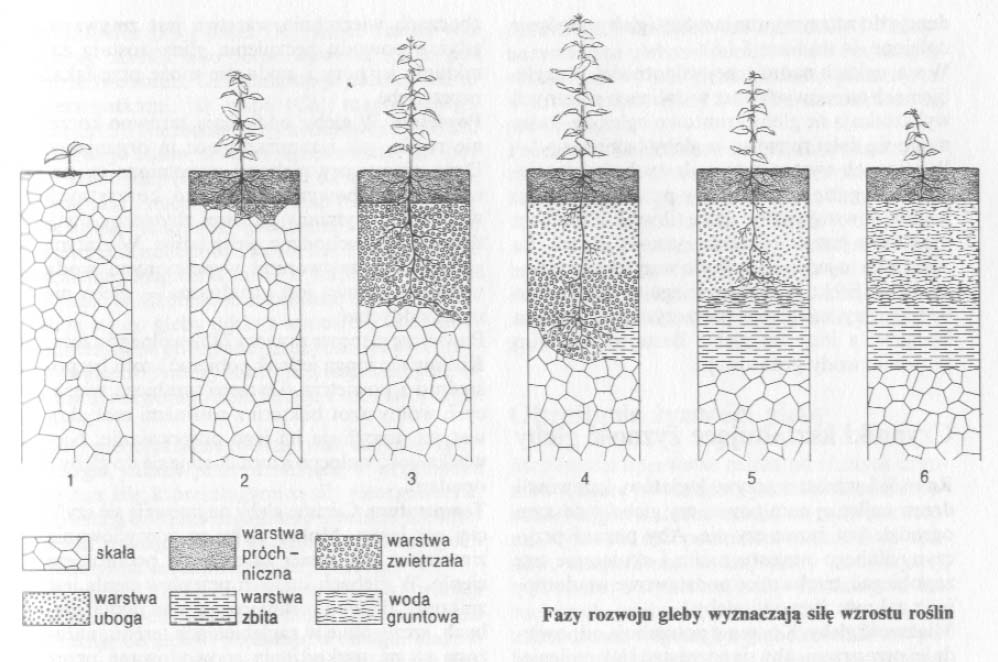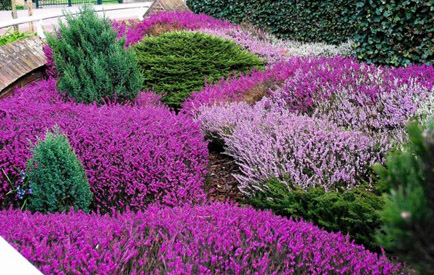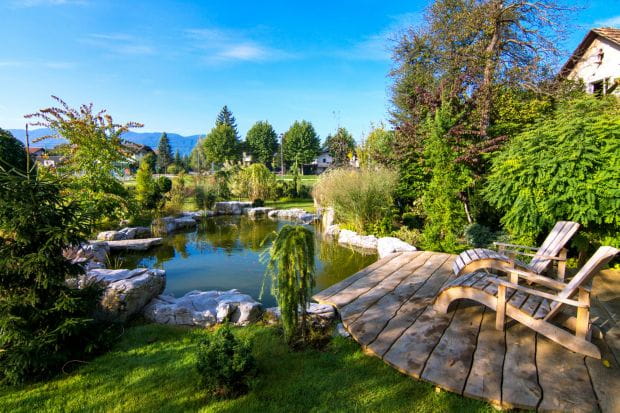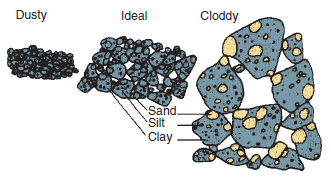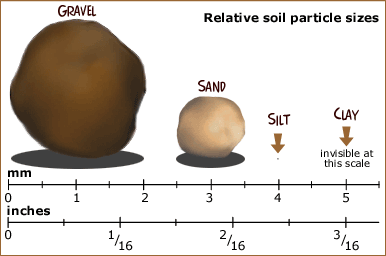Gleby powstają poczynając od powierzchni do głębszych warstw skały macierzystej. W przypadku twardych skał, jak granit czy wapienie, proces ten zachodzi powoli, znacznie szybciej zaś gdy skały są luźne, jak piasek, less lub glina polodowcowa. Pierwszymi roślinami, które zasiedlają skały, są porosty. W miarę postępowania procesu wietrzenia pojawiają się rośliny wyższe, których korzenie wrastają w szczeliny skał. Ze szczątków obumarłych roślin powstaje próchnica. Proces wietrzenia postępuje nadal. Rośliny mają coraz lepsze warunki wzrostu i coraz lepiej się rozwijają. W warunkach wysokiej wilgotności lub w razie niewłaściwej uprawy gleby koloidy ilaste lub próchniczne przeobrażają się w sole i są wymywane w głąb gleby. Powoduje to zbyt duże zagęszczenie dolnych warstw nowo powstającej gleby, co hamuje wzrost korzeni w dół. Nad zagęszczonymi poziomami gromadzi się woda, w wyniku czego zmniejsza się przestrzeń, w której mogą rosnąć korzenie, i rośliny giną. Gleby mogą się rozwijać, ale także degenerować na skutek wymywania, zagęszczania i gromadzenia się wody. W długotrwałym procesie powstawania gleby wykształcają się jej kolejne poziomy. Poziomy te tworzą charakterystyczny układ zwany profilem glebowym. Rysunek jest próbą schematycznego wyjaśnienia tego procesu. Z różnorodności czynników biorących udział w tworzeniu się gleby, jak skała macierzysta, klimat, woda gruntowa, rośliny, wywodzi się różnorodność typów gleby. W terenach górzystych i na skłonach znajdujemy gleby płytkie, na skałach węglanowych określane jako rędziny, a na skalach masywnych jako rankery (stadium 2).
Na terenach chronionych przed erozją powstają gleby brunatne (stadium 3). W większych, płaskich i suchych nieckach i na nizinach, zwłaszcza na podłożu lessowym na wschodzie Europy, wytworzyły się głębokie, próchniczne czarnoziemy. W obszarze środkowoeuropejskim na rozległych równinach lub na wschód od wzniesień osadzały się lessy; z lessów tych w wilgotnym klimacie powstawały gleby brunatne wyługowane (stadium 4) lub na piaskach, np. na wrzosowiskach na północy Niemiec powstawały ubogie gleby bielicowe (podsole), które mają pod wymytą warstwą piasku ciemnobrązowy, zbity poziom. W glebach obydwu rodzajów mogą tworzyć się zbite (spiętrzone) warstwy, z tendencją do zatrzymywania wody (gleby odgórnie oglejone — stadium 5 i 6).
W warunkach nadmiernej wilgotności, w zagłębieniach terenowych oraz w dolinach rzecznych wykształcają się gleby gruntowo oglejone, które mogą się dalej rozwijać w gleby bagienne.
W rejonach występowania ilastych skał macierzystych, gdzie rozwój gleby przebiega bardzo wolno, powstają gleby ilaste (iłowe). Zadaniem ogrodnika jest zwiększenie żyzności gleby. Nie istnieje na to jeden sposób dla wszystkich rodzajów gleb. Efekt jakiegoś zabiegu użyźniającego będzie inny na glebie piaszczystej w ciepłym klimacie, a inny na glebie ilastej o wysokim poziomie wody gruntowej.

